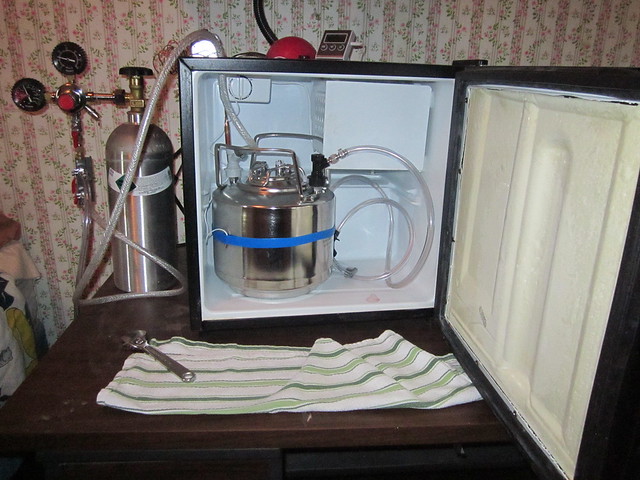BykerBrewer
Active Member
- Joined
- Dec 10, 2015
- Messages
- 38
- Reaction score
- 9
Hello,
I just bought my first keg and am really excited to rack my house IPA into it in a couple days. My keg fits into my fridge, but my CO2 tank does not. I want to force carb now that I am not required to wait at least 2 weeks for the beer to carbonate in bottles. However, every force carbonation method I have read about requires first cooling the beer, then connecting the CO2 tank to the keg and shaking/rolling it for a few minutes, then placing the connected keg and CO2 tank in the fridge together for a few hours at a predetermined pressure. None of this is an issue except for that last step of placing the keg in the fridge while connected to the CO2 tank, as my CO2 tank does not fit into the fridge.
Is there a way I can force carb without at some point needing to put my CO2 tank into the fridge with the keg? Because the CO2 tank will not fit.
Cheers!
I just bought my first keg and am really excited to rack my house IPA into it in a couple days. My keg fits into my fridge, but my CO2 tank does not. I want to force carb now that I am not required to wait at least 2 weeks for the beer to carbonate in bottles. However, every force carbonation method I have read about requires first cooling the beer, then connecting the CO2 tank to the keg and shaking/rolling it for a few minutes, then placing the connected keg and CO2 tank in the fridge together for a few hours at a predetermined pressure. None of this is an issue except for that last step of placing the keg in the fridge while connected to the CO2 tank, as my CO2 tank does not fit into the fridge.
Is there a way I can force carb without at some point needing to put my CO2 tank into the fridge with the keg? Because the CO2 tank will not fit.
Cheers!











































![Craft A Brew - Safale S-04 Dry Yeast - Fermentis - English Ale Dry Yeast - For English and American Ales and Hard Apple Ciders - Ingredients for Home Brewing - Beer Making Supplies - [1 Pack]](https://m.media-amazon.com/images/I/41fVGNh6JfL._SL500_.jpg)














